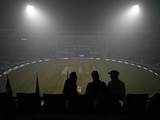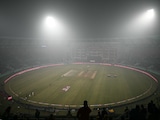The moon, a steadfast companion, graces the night sky as a faithful friend to Earth. Casting its gentle glow, it illuminates the darkness with a bond that transcends the vastness of space. Together, Earth and moon - both billions of years old - dance in cosmic harmony, orchestrating the celestial symphony of our universe. But now, a new study by American space agency NASA has revealed that the moon has been silently undergoing changes, significantly shrinking in size over the past few hundred million years.
The January 25 study says that the moon has shrunk more than 150 feet in circumference as its core gradually cooled over the said time period. This continued shrinking leads to formation of faults causing moonquakes. This will make human exploration difficult, in the same way it does for those living near fault lines on the Earth.
The study was carried out by scientists from NASA, the Smithsonian, Arizona State University and The University of Maryland. It discovered evidence that the continuing shrinkage led to some surface changes around the Lunar South Pole where NASA hopes to land during the crewed Artemis III mission.
"Our modelling suggests that shallow moonquakes capable of producing strong ground shaking in the south polar region are possible from slip events on existing faults or the formation of new thrust faults," lead author Tom Watters, from the Smithsonian Institution told Planetary Science Journal.
"The global distribution of young thrust faults, their potential to be active, and the potential to form new thrust faults from ongoing global contraction should be considered when planning the location and stability of permanent outposts on the moon," he added.
The researchers used the Lunar Reconnaissance Orbiter Camera on board NASA's Lunar Reconnaissance Orbiter (LRO) to detect the thousands of relatively small, young thrust faults widely distributed in the lunar crust.
The contraction is caused by cooling of the moon's still-hot interior and tidal forces exerted by Earth, resulting in global shrinking.
The shrinking process is being compared to the wrinkling of a grape when it becomes a raisin. While a grape has a flexible skin, the moon has a brittle surface, which causes faults to form where sections of the crust push up against each other.
The shallow moonquakes occur only about 100 or so miles deep into the moon's crust. But unlike our planet, where earthquakes last for only a few seconds, moonquakes can last for hours and even a whole afternoon.















